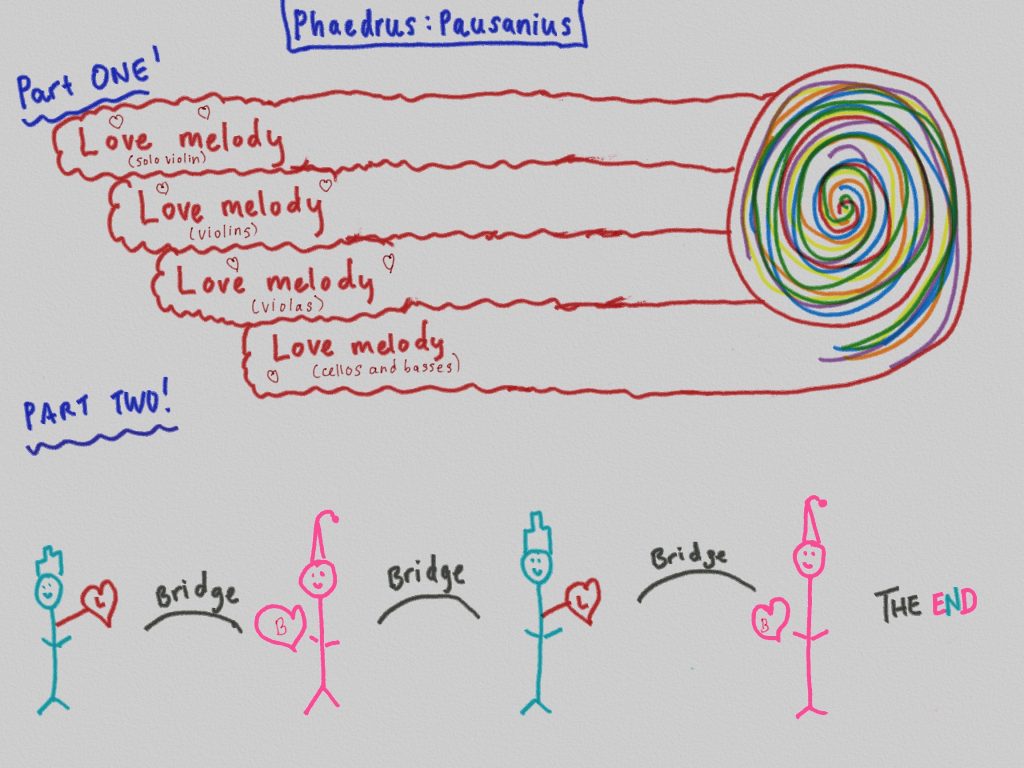The first movement, Phaedrus:Pausanius, is in two parts.
First part:
Leonard Bernstein called the first part “a lyrical oration in praise of Eros, the god of love.”
It opens with the solo violin playing a melody alone. I imagine this is someone (Phaedrus? Bernstein? Everyman?) simply talking about Love. The tempo is slow; the mood is contemplative and tender. The melody meanders up and down and then resolves.
Bernstein once wrote, “An important feature of a good melody – it’s shape – the curve it makes, as it rises with tension, and settles down in relaxation.” (Young People’s Concerts, pg. 213)
(Please forgive the horrible sound quality of these homemade videos, made with an iphone in a NYC apartment!)
After the solo violin plays the melody, the first violin section of the orchestra enters playing the exact same melody (although it starts three notes lower than the original.) This happens at :56 seconds on the Spotify recording above. When they have finished, the viola section joins and plays the same melody again three notes lower (1:52), and then the cello and bass section start to play the same melody again three notes lower (2:45) but the excitement has built up by this point and it all swirls around into the Second Part (2:58). This method of layering melody is called a fugue (see J.S.Bach).
Second Part
The second part of the first movement is graceful and energetic. Bernstein says that it “describes the duality of lover and beloved.” So within the second part, there are two even smaller sections. Let’s call them “L” for Lover and “B” for Beloved (or “L”eonard “B”ernstein)?
On the recording L is from about 2:58-3:30 and B is 3:46-4:48. Like a lover and beloved, each section has a slightly different character. L is a bit more active and upbeat, B is more vulnerable; in fact Bernstein writes in the music above the B part, “sweet with grace” and “delicate.”
Here’s a short excerpt with piano of the beginning of part L.
And a short excerpt with piano of the beginning of part B.
L and B each appear twice, connected by orchestral bridges. So, the overall form of the first movement sounds (looks) like this:

